Lower blepharoplasty is one of the most popular cosmetic procedures as puffy eye bags can be caused by genetics or aging. A wide variety of people in their 20s and sometimes even in their teens, all the way to older have eye bags that are visible all the time.
The cause of eye bags that are always visible is fat normally around the eyeballs for cushioning that has pushed or herniated forward, causing a bulging appearance in the lower eyelids.
With eye bags affecting such a wide range of people, lower eyelid surgery is the most definitive way to reduce these fat pockets. It is very understandable for people who never had elective surgery to ask what the procedure is like.
Lower Eyelid Surgery with Quick Recovery
I’ll discuss what I do to make my patients recover from under eye bag surgery as quickly as possible, while making the experience comfortable, convenient, and making results appear natural, like they never had eye bags.
As a cosmetic eyelid specialist, I perform lower eyelid surgery to sculpt and remove eye bags everyday in my practice using the more technically advanced transconjunctival blepharoplasty method. I also revise lower eyelid surgeries performed by other doctors to address complications from lower eyelid skin shortages such as lower eyelid retraction. I also perform other eyelid surgeries to relieve hooded eyes, specialized oculoplastic procedures like eyelid ptosis surgery or drooping of the upper eyelids, and correcting eyelids affected by thyroid eye disease.
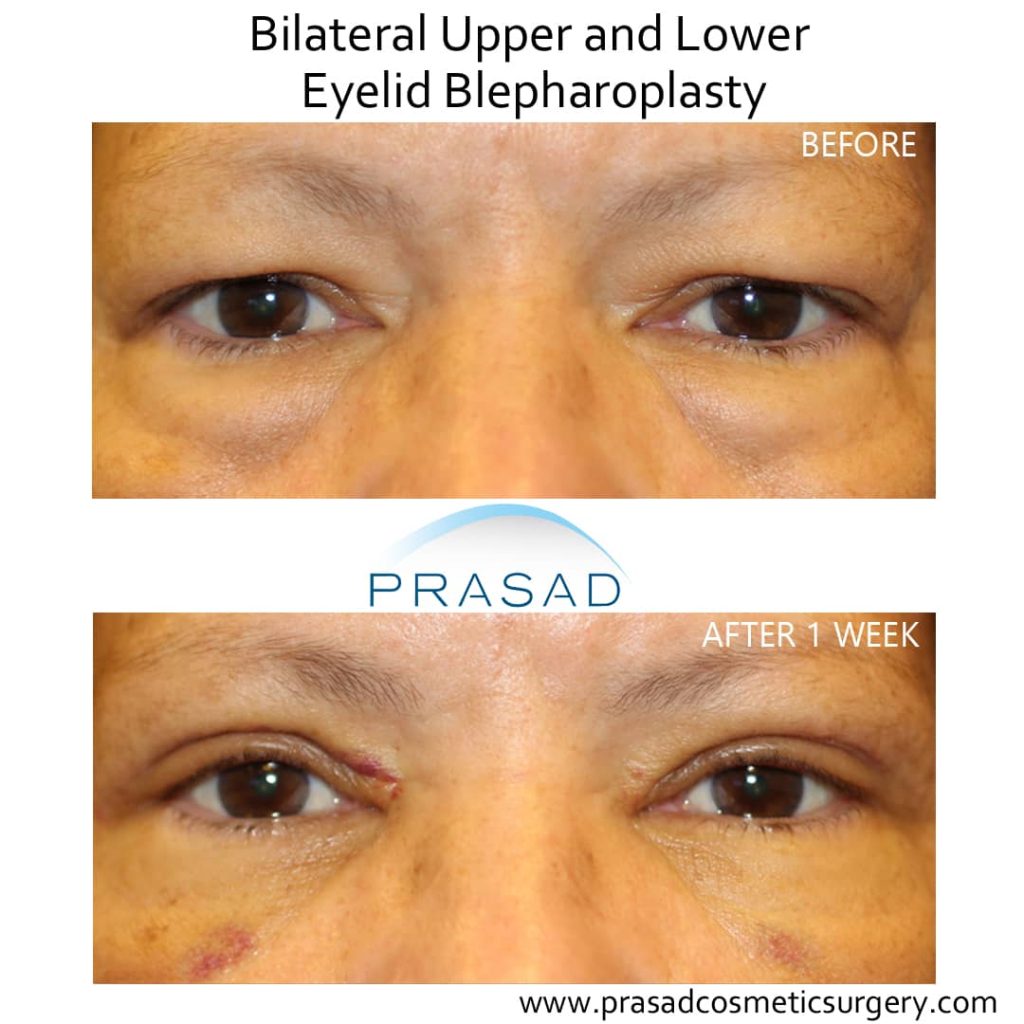
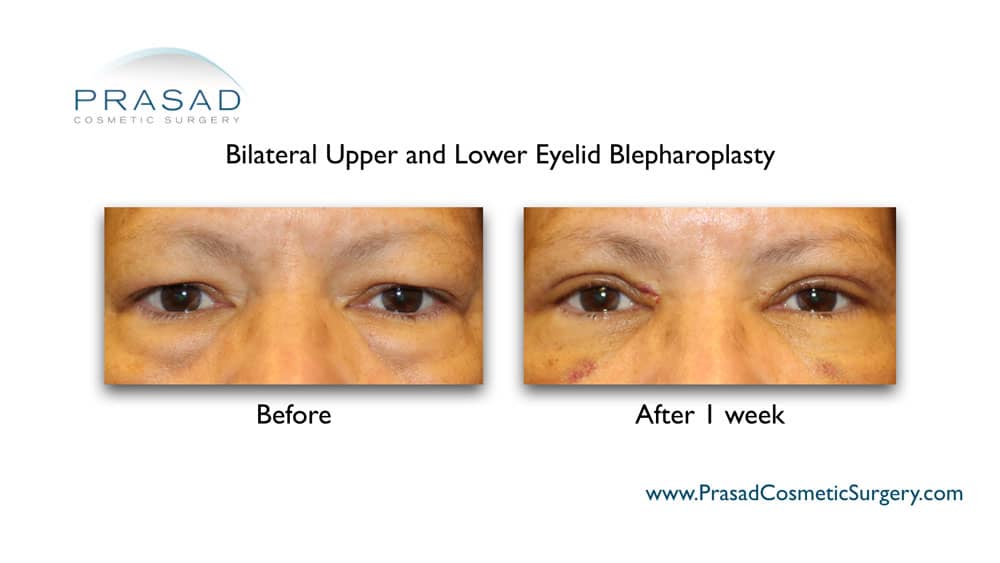
While temporary eye bags can be caused by lack of sleep, salt intake, allergies, and sinus issues, lower eyelid blepharoplasty is only for eye bags that are visible all the time because they are caused by prolapsed fat. As previously mentioned, orbital fat normally cushions the eyeball, but it can prolapse forward, creating these bulges we know as eye bags. While under eye filler can be used to camouflage slight cases of eye bags, the only way to remove them long-term is with lower eyelid surgery.
Lower Eyelid Blepharoplasty Technique
- Transconjunctival technique
- Transcutaneous technique
Transconjunctival Blepharoplasty
Lower eyelid surgery to remove eye bags can be done using techniques that require minimal recovery time. In my practice, I take a specialized approach to lower eyelid surgery that uses no external incision on the lower eyelid skin called transconjunctival blepharoplasty. With this technique, I sculpt the fat pockets that cause eye bags from the inside of the eyelid, and surgically remove the prolapsed fat.
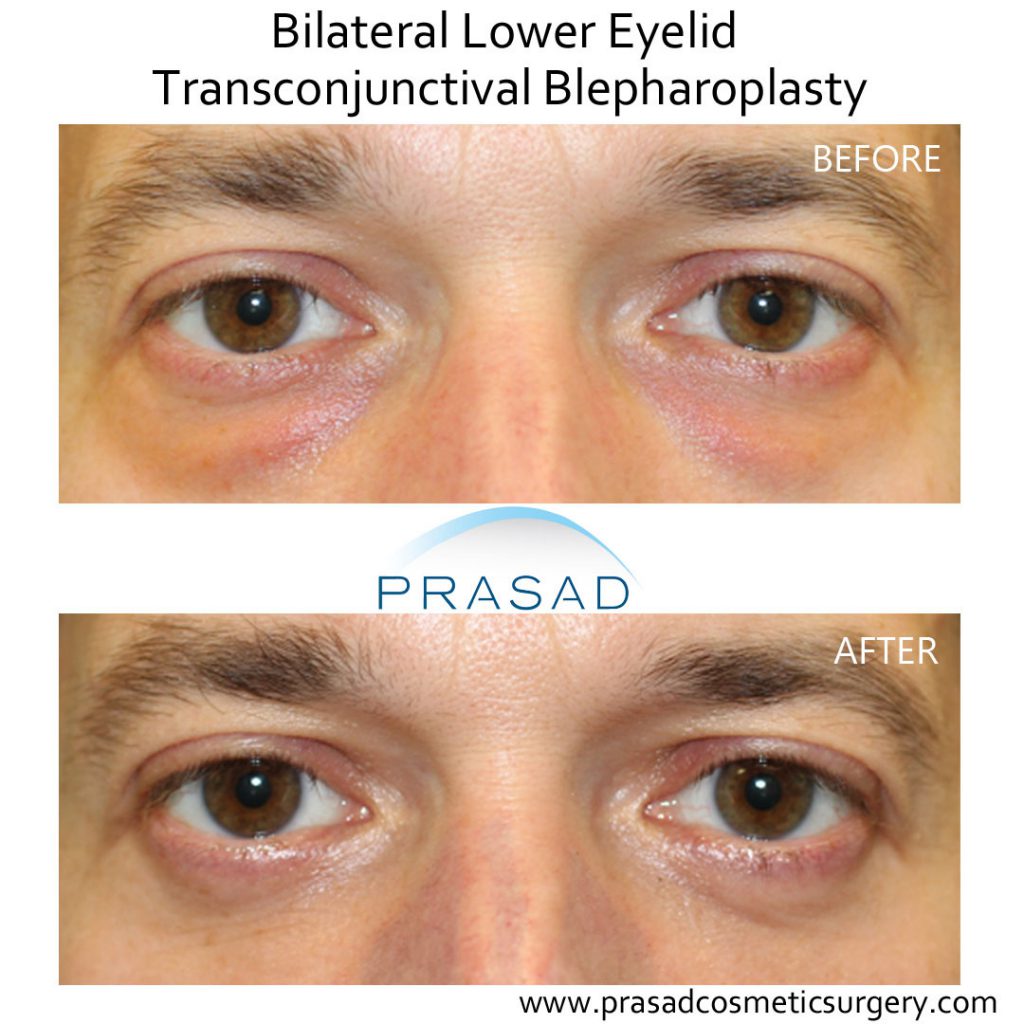
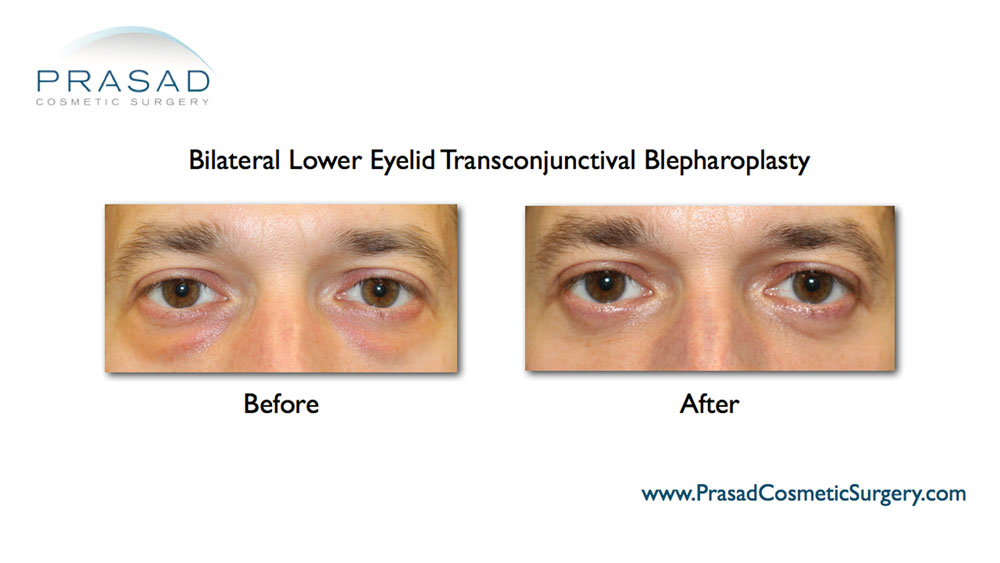
Some fat is normally left behind to prevent a hollow appearance and to provide a natural, smooth contour to the lower eyelids. Often, sutures are not needed as the internal incisions can be closed using a laser. Since there is no incision on the eyelid skin, no healing is needed on the skin. Other eyelid surgeries with skin incisions need the removal of sutures about a week after surgery, and incision healing continues after suture removal.
Our patients return to work about a week after surgery, often not needing suture removal as internal incisions can be closed with a laser. With no external incision to heal, our patients only require cold compresses that are used 20 minutes on, and 20 minutes off during waking hours of the first 2 days after surgery to help reduce swelling. By the third day, our patients use warm compresses to help clear out fluid that contributes to swelling. While many patients look pretty good a week after the transconjunctival blepharoplasty procedure, some may have lingering bruising and swelling, which resolve soon after.
Lower Blepharoplasty Recovery Photos Day by Day
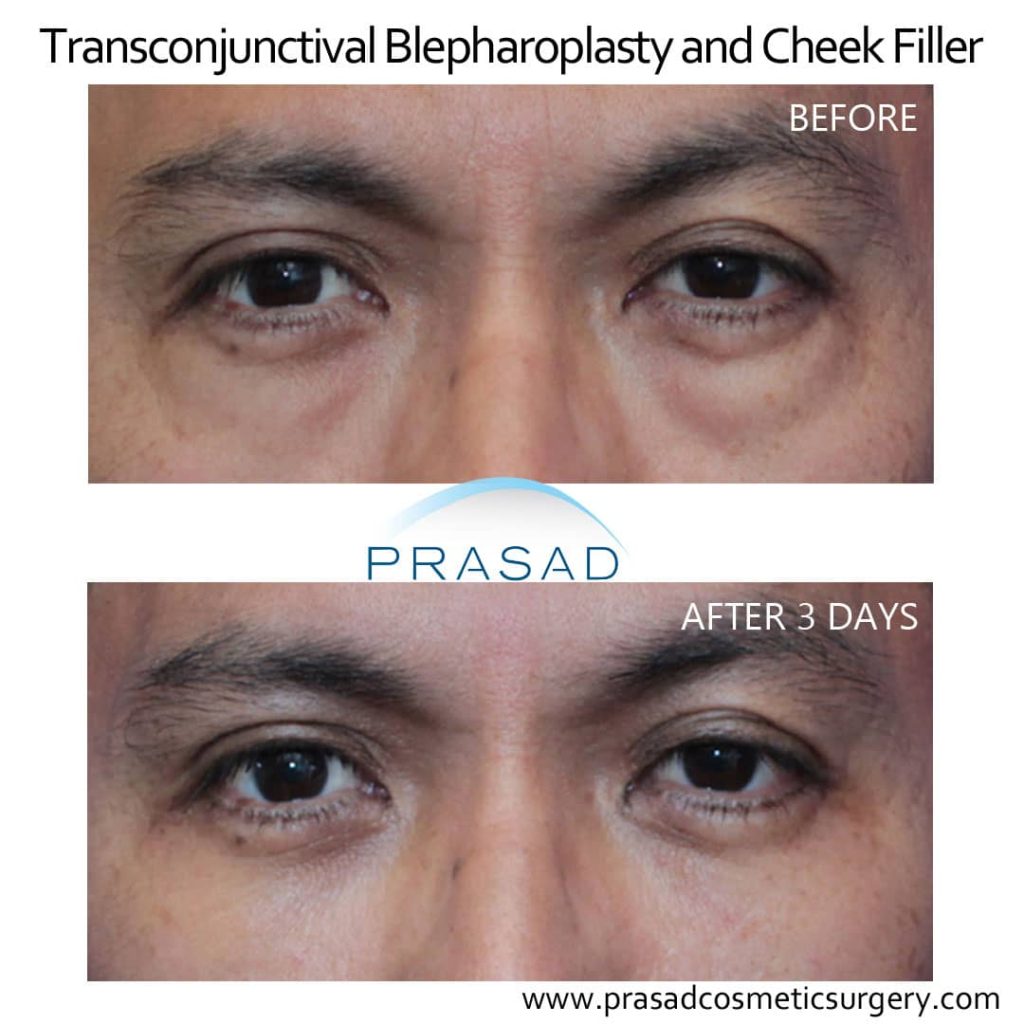
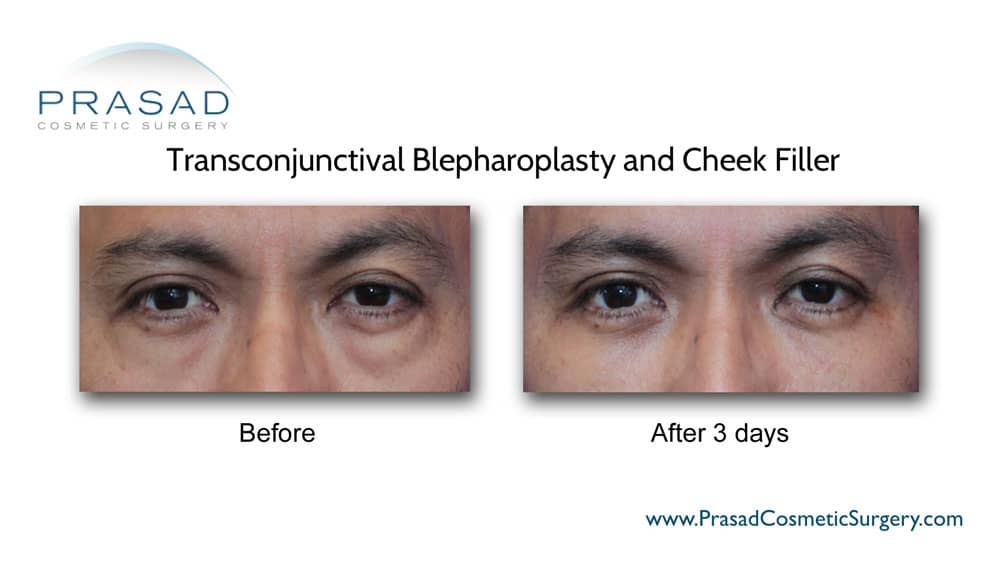
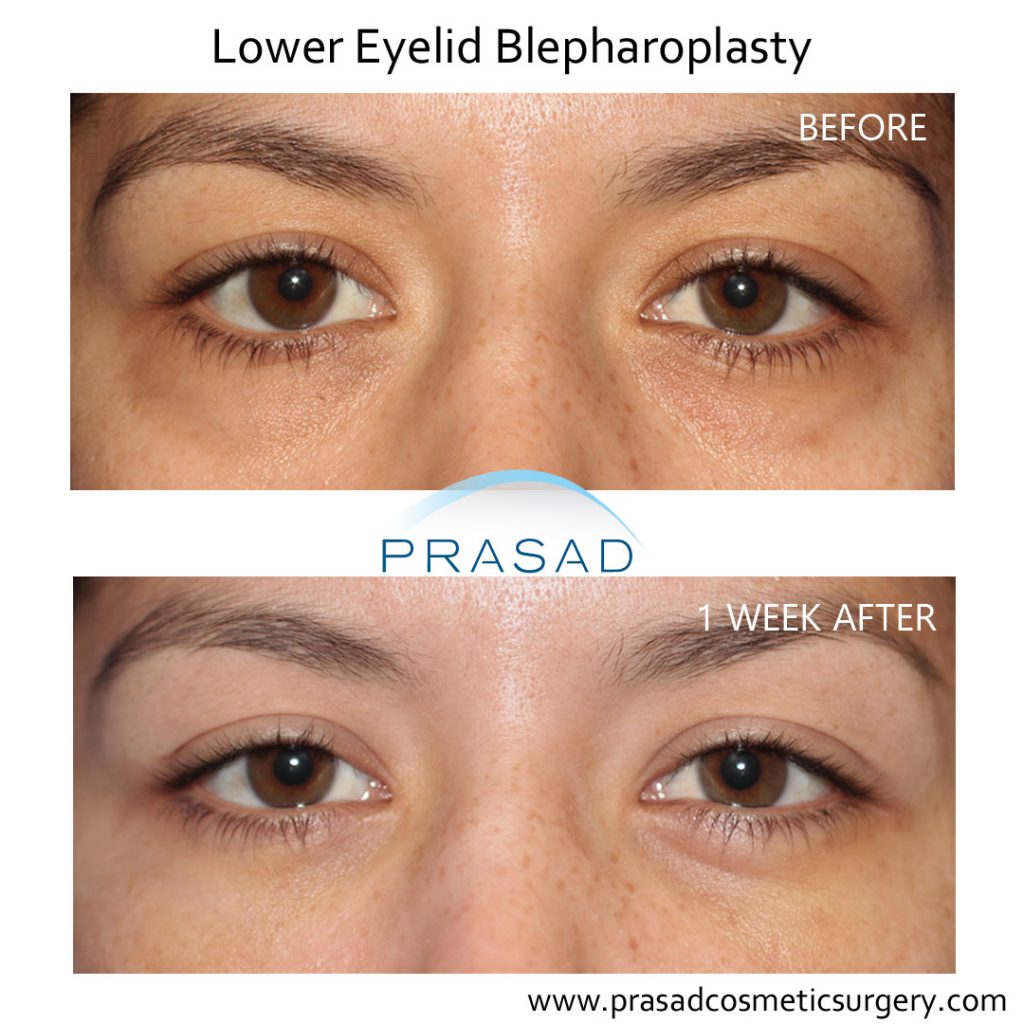
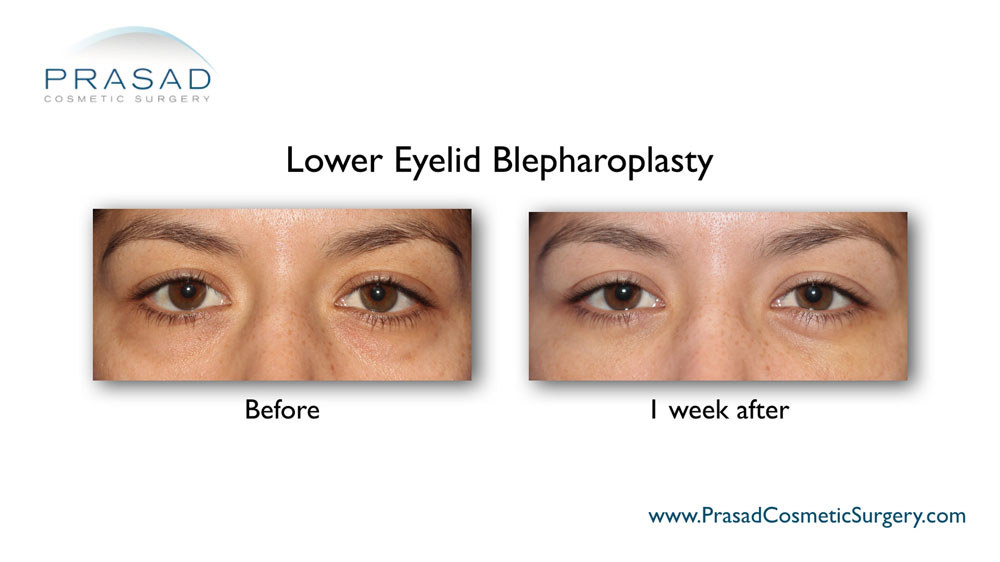
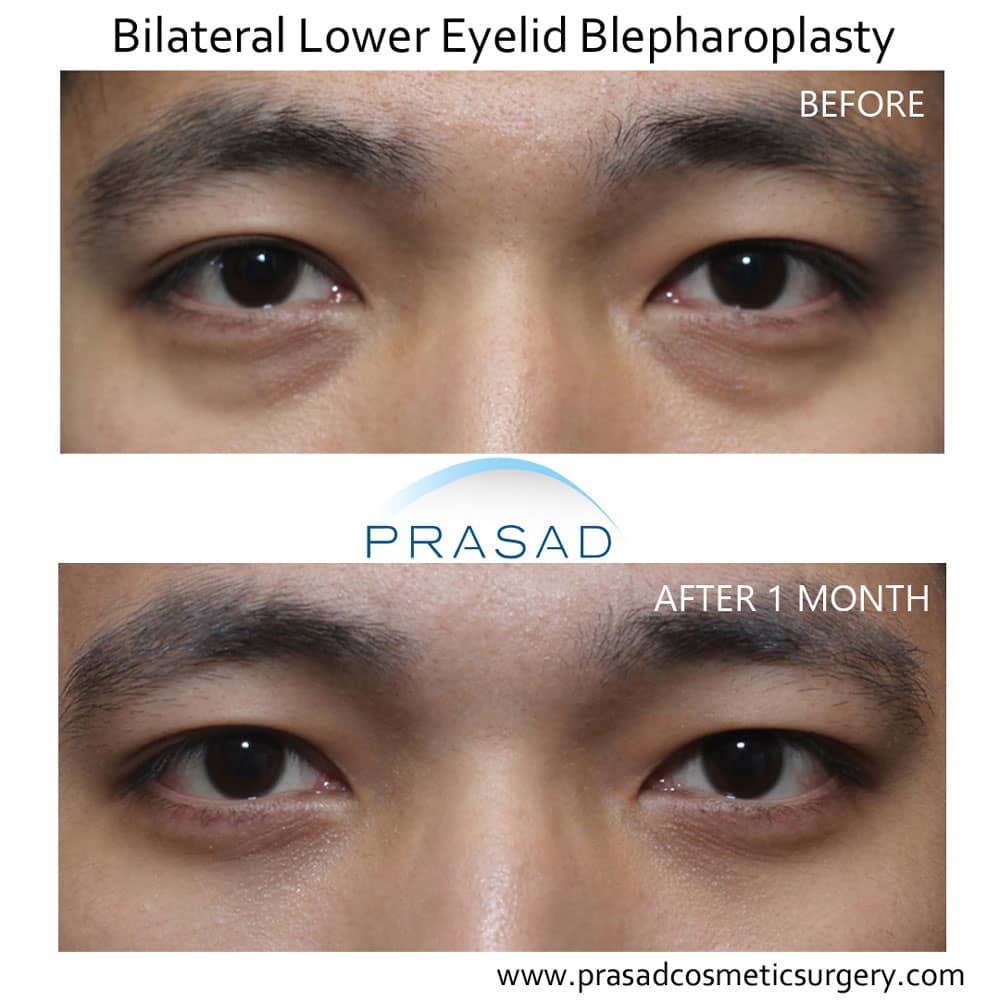
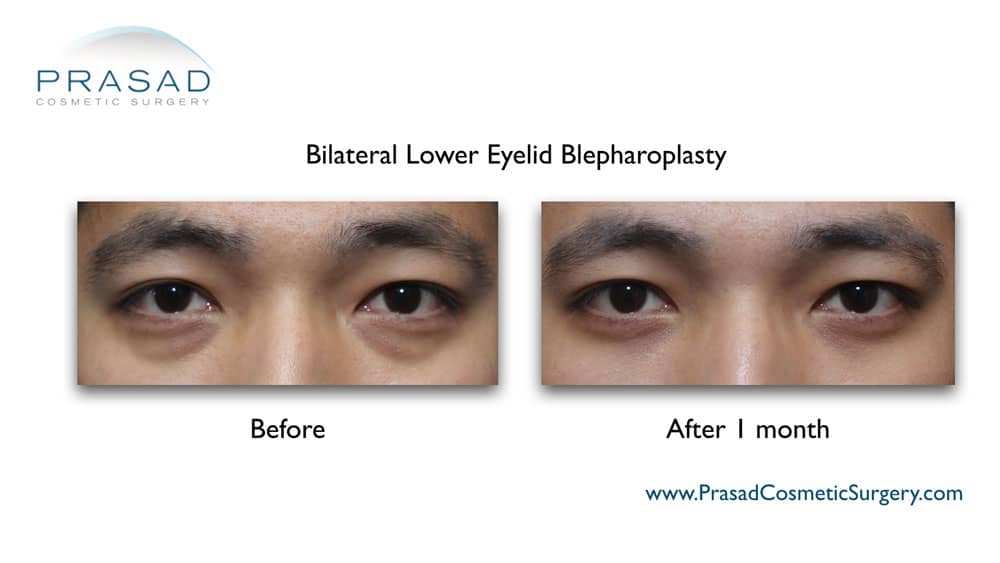
After healing, it appears as if you’ve never had eye bags, even from up close because there is no incision to be seen. My patients recover from eye bag surgery in a similar timeframe to using fillers to camouflage eye bags, as filler treatment under the eyes often results in temporary bruising, which also takes about a week to resolve. The differences are that fillers can’t treat more prominent eye bags, and results only last about a year until the filler is needed again.
Lower Blepharoplasty Before and After
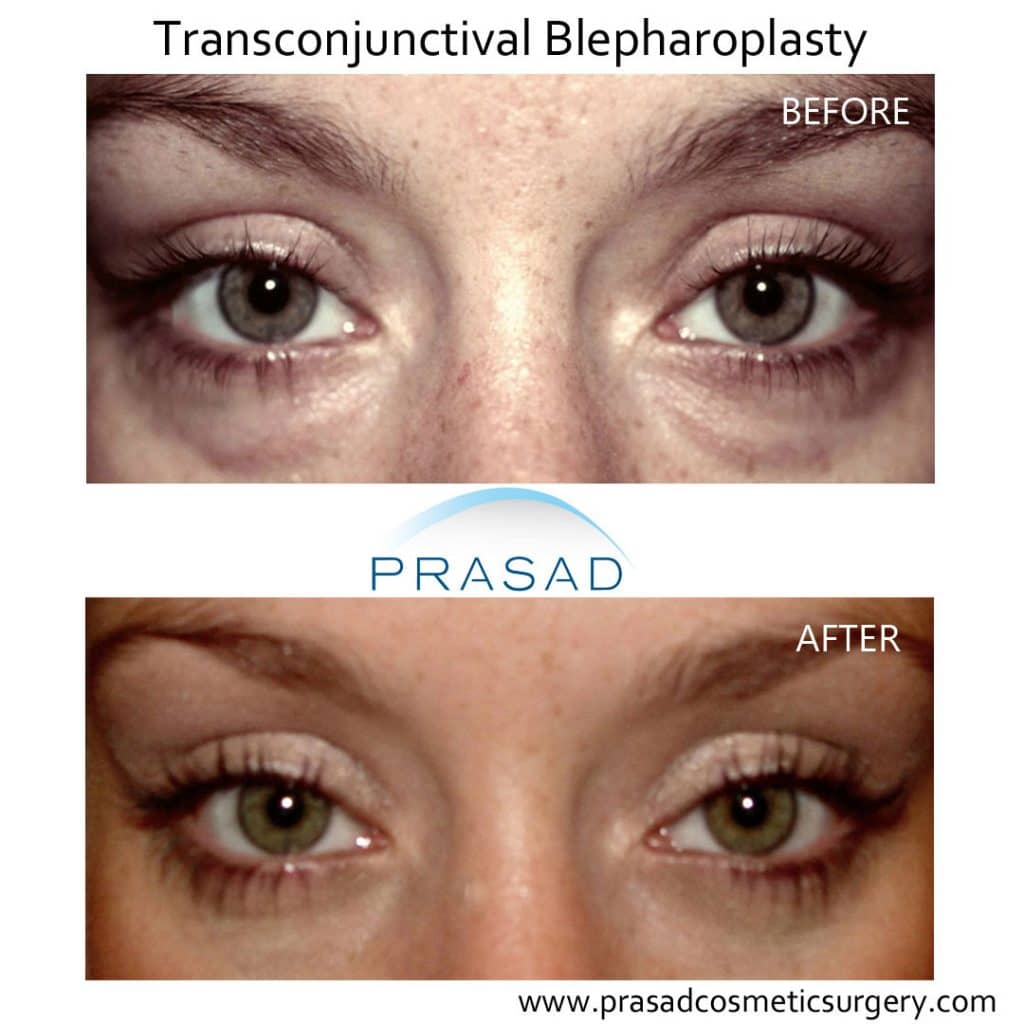
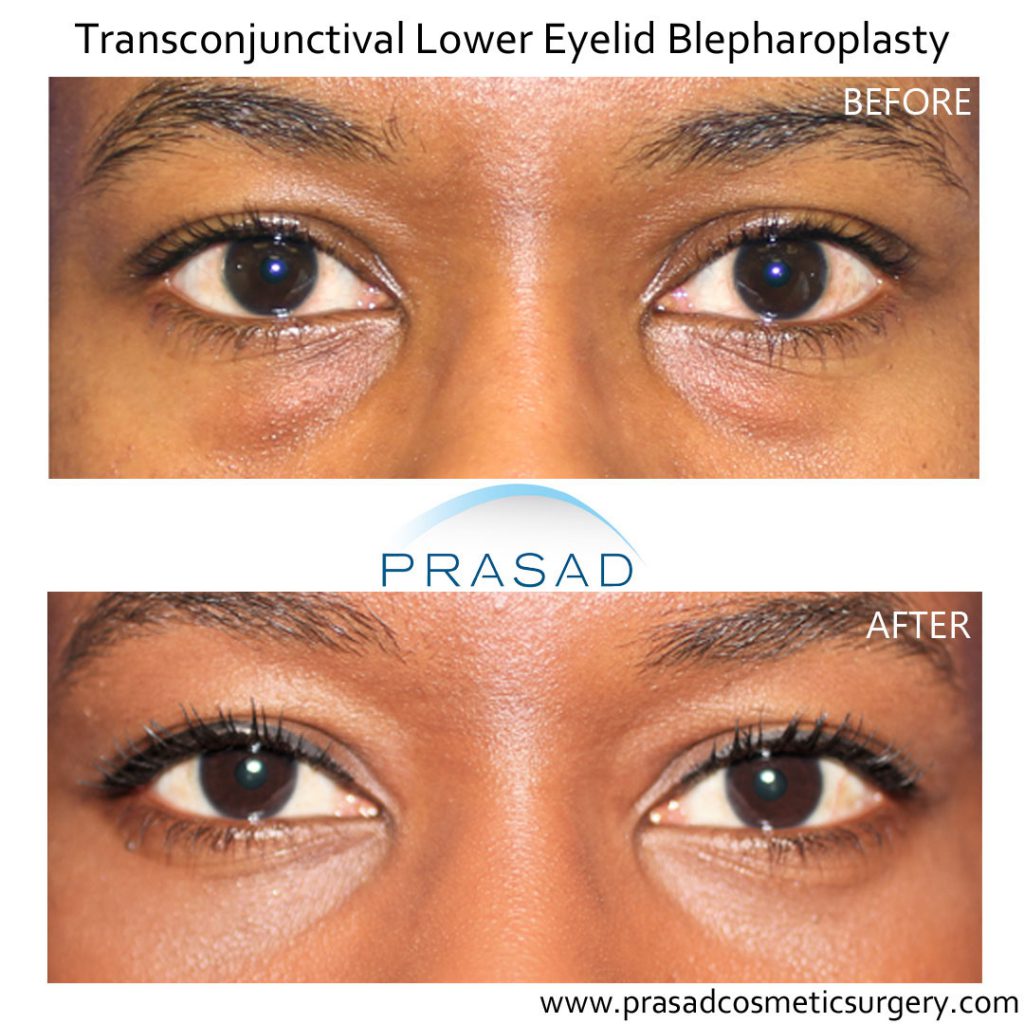
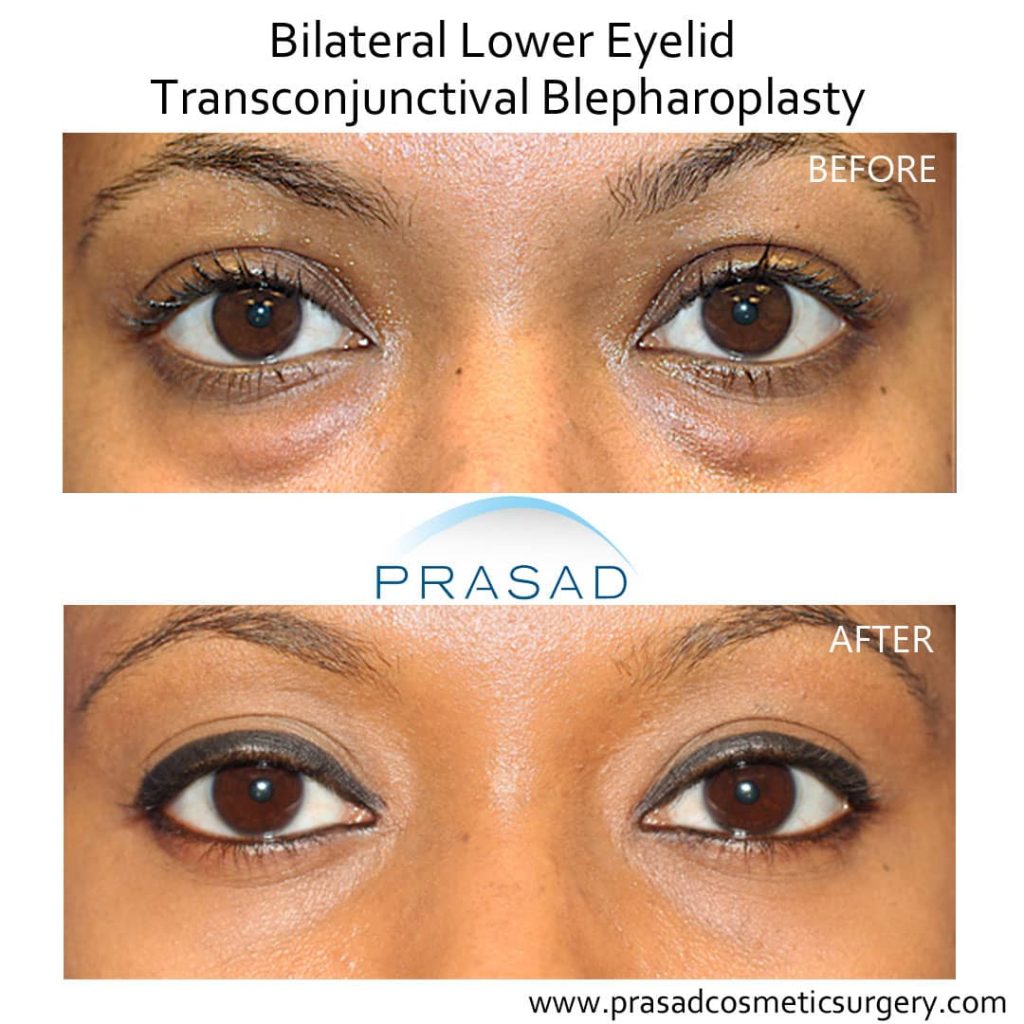
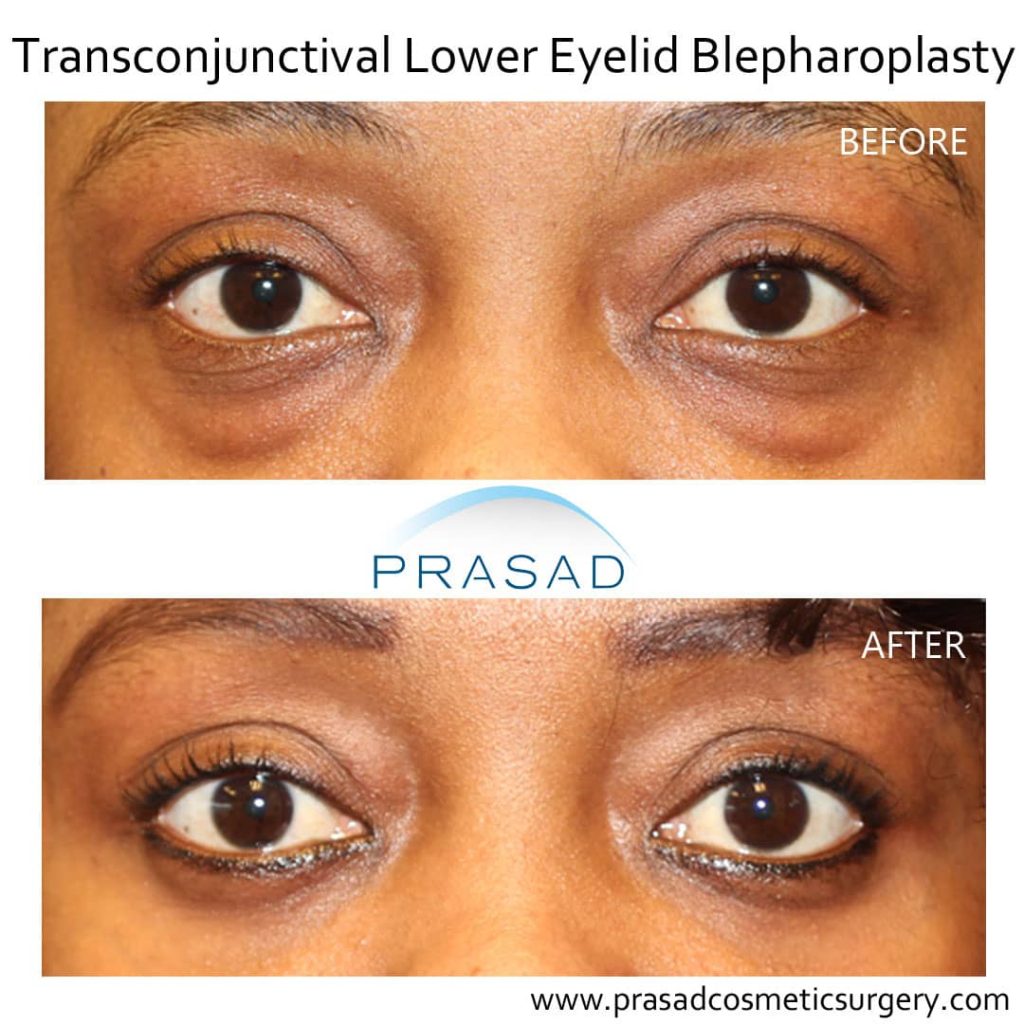
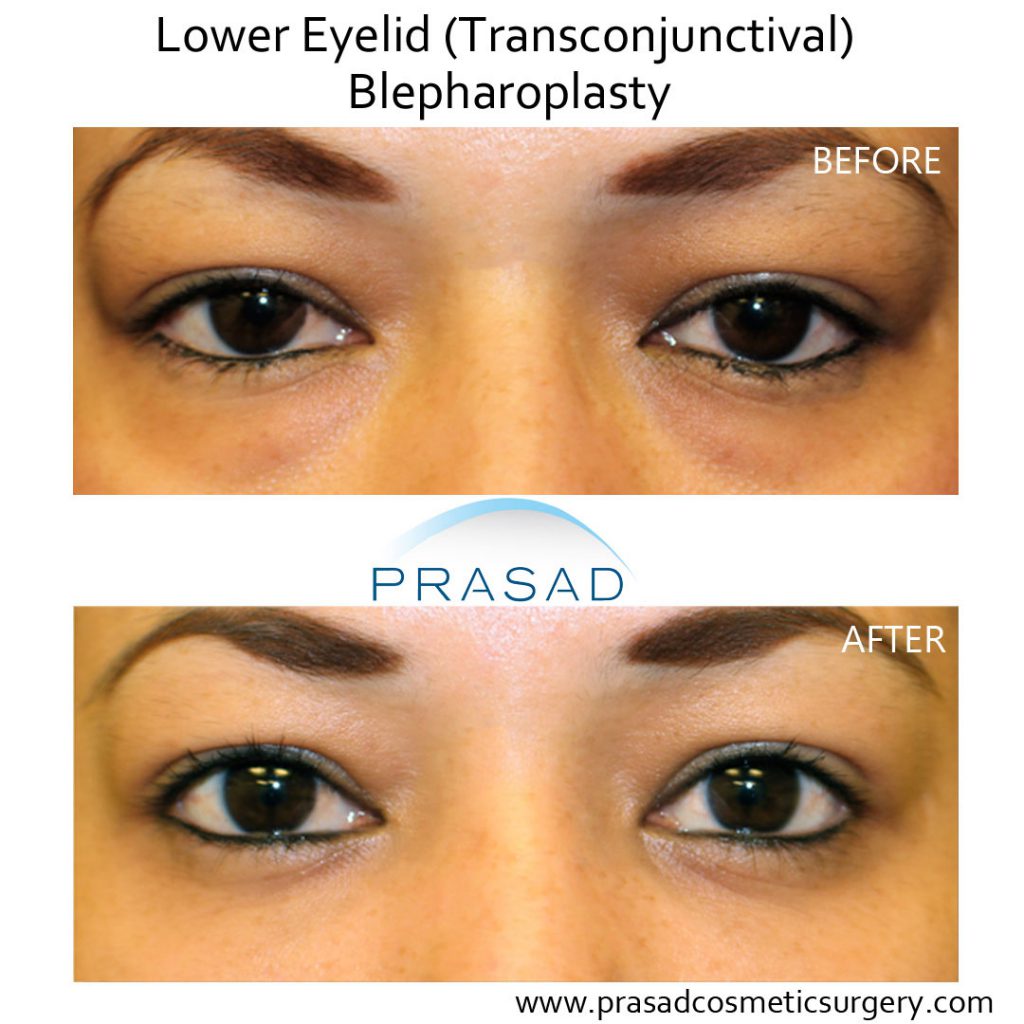
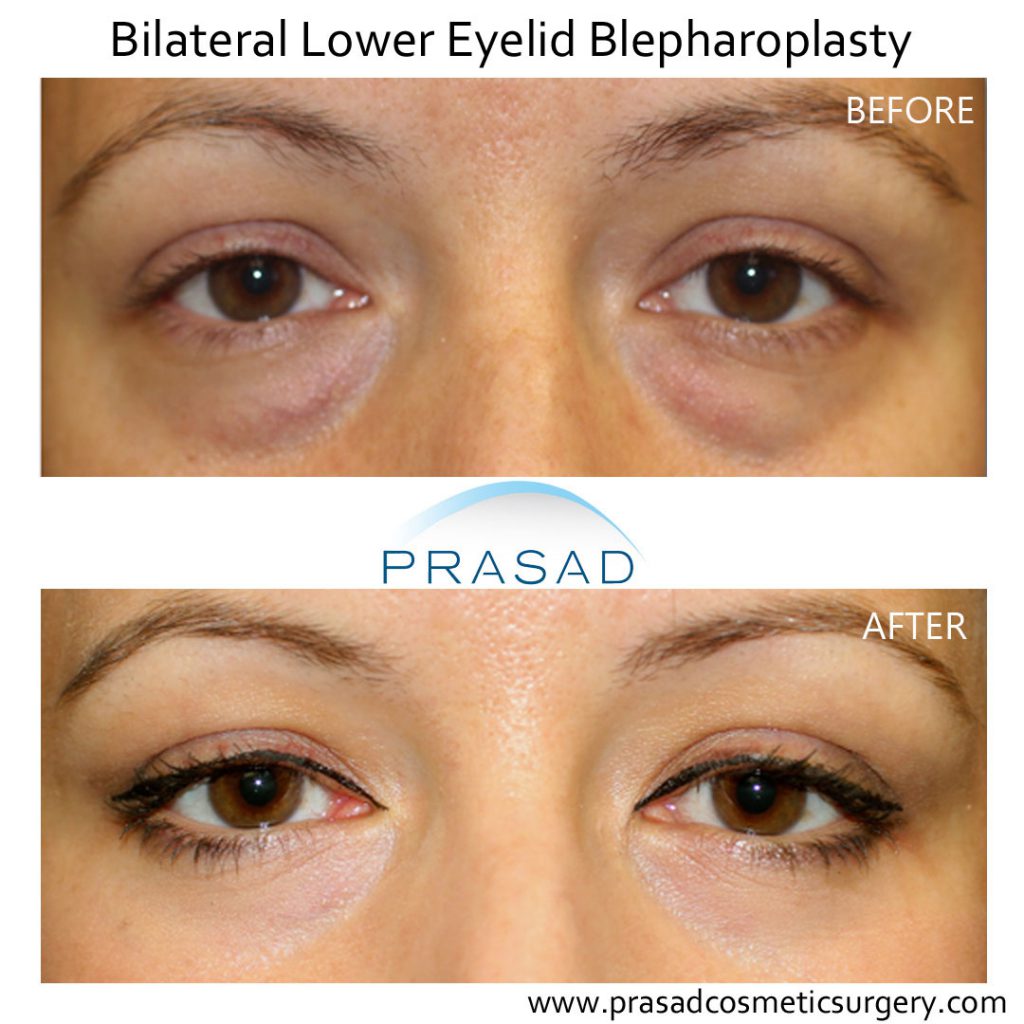

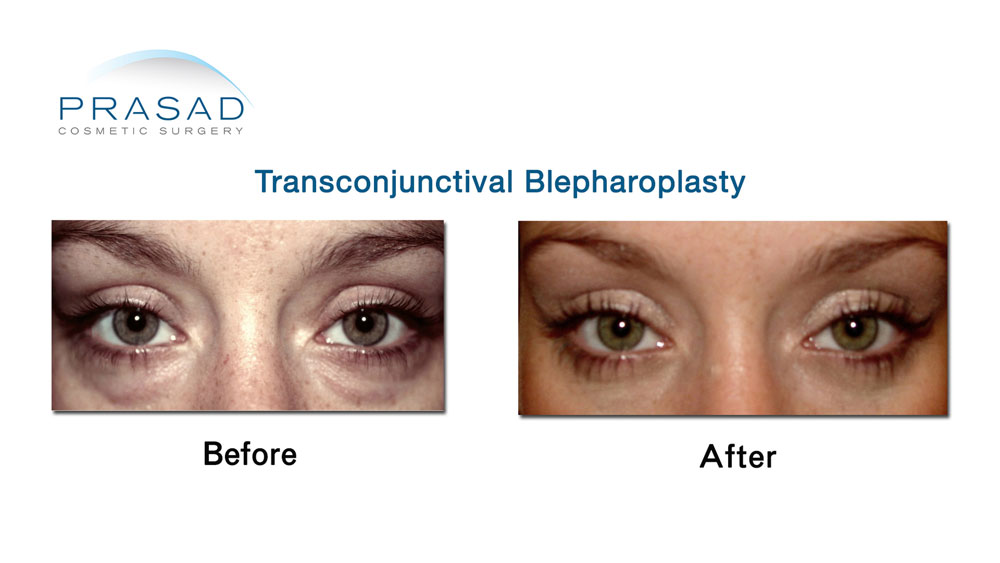
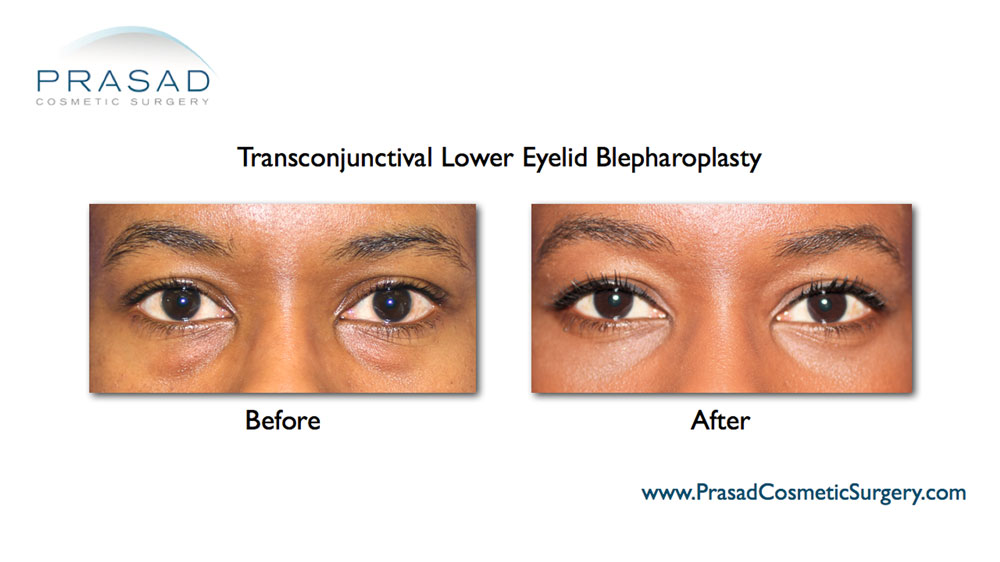

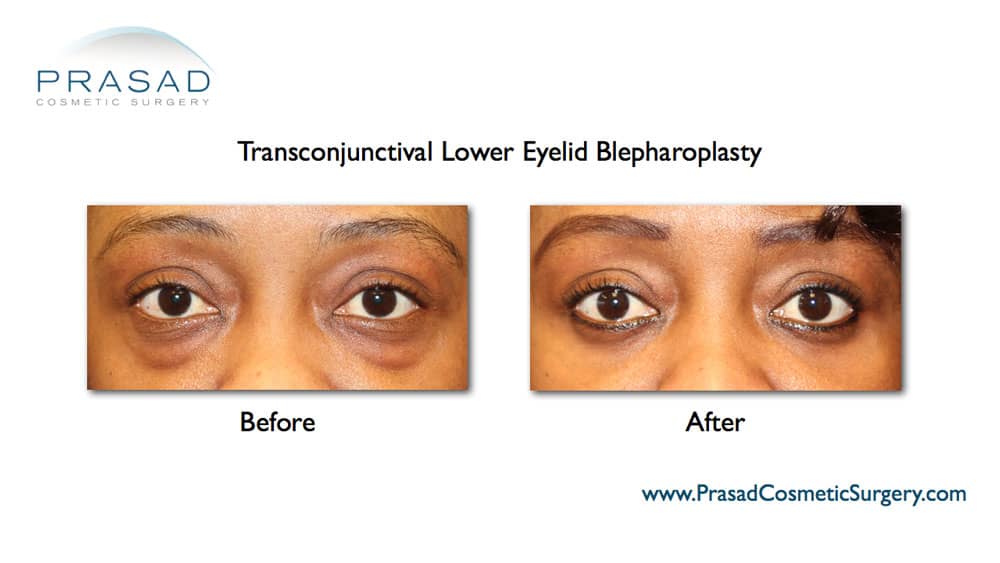
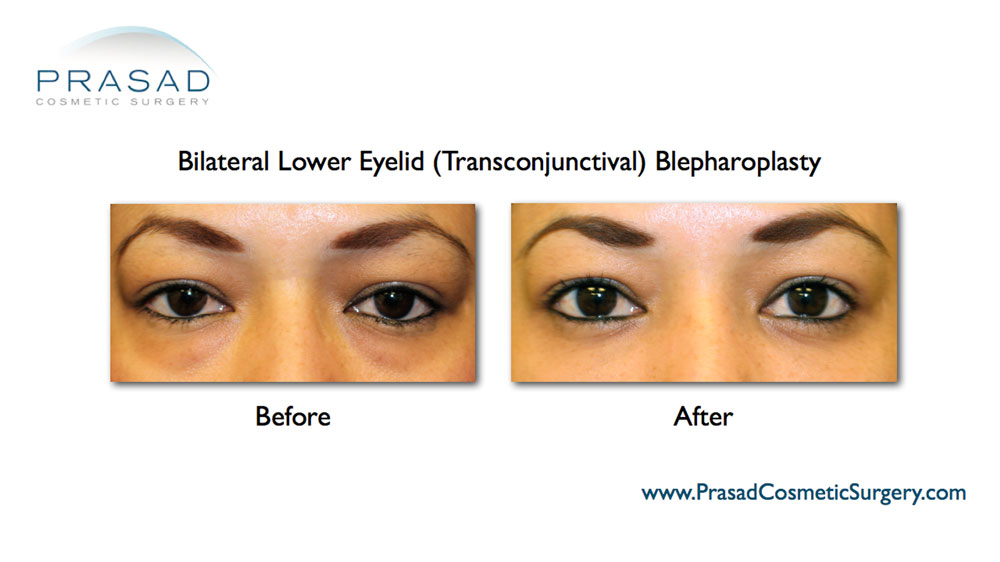
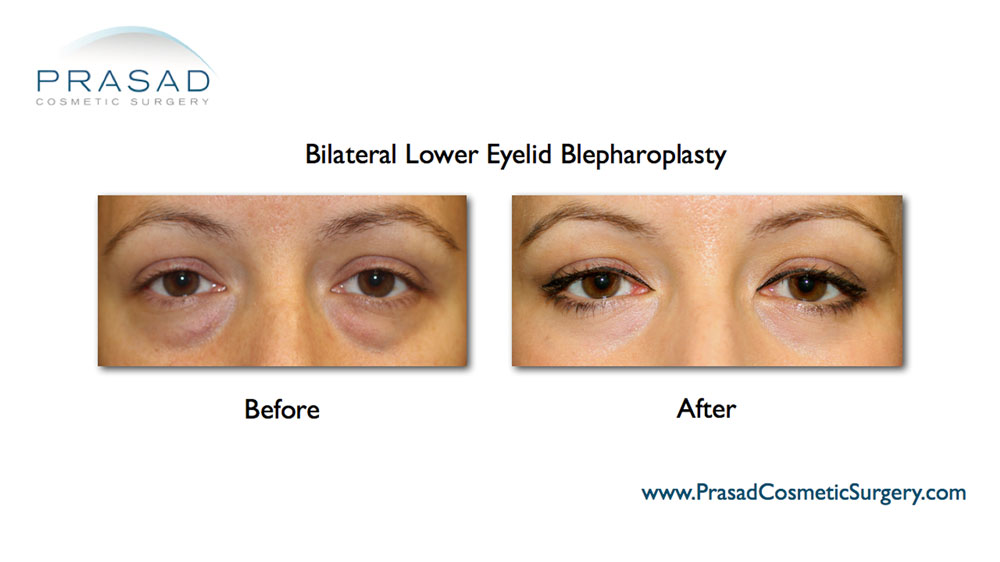
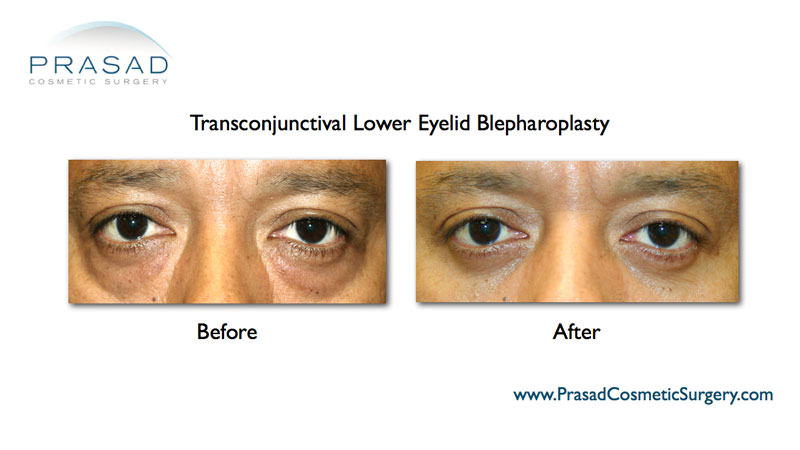
View more lower blepharoplasty before and after photos
What Kind of Anesthesia for Blepharoplasty?
The type of anesthesia is a major factor in surgical recovery. I perform all my upper and lower eyelid surgeries using local anesthesia with LITE IV sedation. Patients can go home soon after surgery, and start healing right away.
General anesthesia, on the other hand, can prolong the healing process. When people are under general anesthesia they need a ventilator to breathe, unlike in local anesthesia where patients breathe on their own. The immediate side effects of general anesthesia include nausea, vomiting, and grogginess after surgery, which do linger. It takes about a week to recover from the effects of general anesthesia, which are taxing on the body, so healing from the actual surgery is slowed and prolonged.
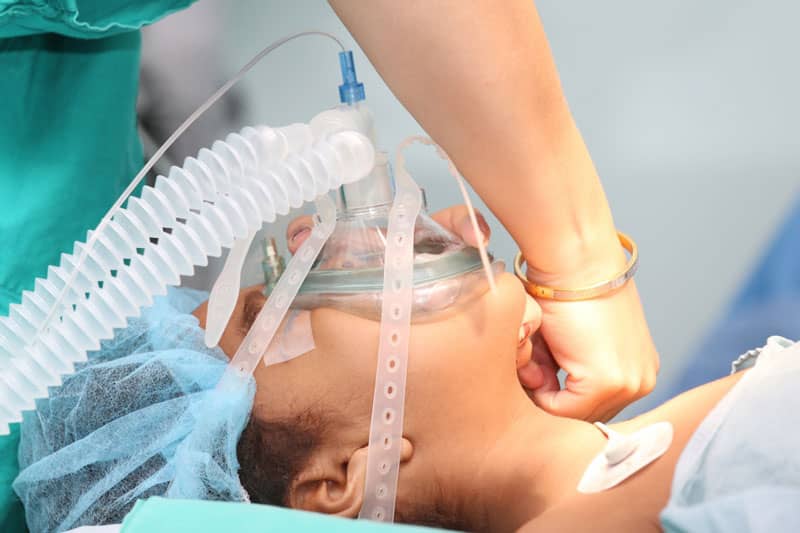
In contrast, with local anesthesia patients can go home the same day as surgery. General anesthesia requires an overnight stay after surgery as monitoring of the groggy patient is needed for safety. It’s important to ask prospective surgeons what type of anesthesia is used when deciding on eye bag removal surgery. While it seems obvious for local anesthesia to be used, when I first started my practice using local anesthesia for eyelid surgery, many other surgeons thought I was crazy. While many surgeons do prefer local anesthesia now for their patient’s comfort, and quicker healing, it is important to ask about preferred anesthesia before surgery.
Transcutaneous Blepharoplasty
The most commonly performed surgical technique to remove eye bags is called transcutaneous blepharoplasty, which does involve an external incision, and usually requires more healing time. This technique is used by most general plastic and cosmetic surgeons as it is less intricate than the transconjunctival method. An incision is made below the eyelashes, so the fat pockets causing the eye bags can be accessed, sculpted, and removed through the incision. Healing usually takes longer for this method because of the incision in the lower eyelid.
Like other surgeries that involve an incision in eyelid skin, sutures to close the incision need to be removed about a week post-surgery, and more time is needed for the incision to heal. An antibiotic ointment is needed on the incision line for the first two days after blepharoplasty surgery. After two days, a petroleum-based ointment like Aquaphor should be used on the incision to create a moist environment for healing. Using an antibiotic ointment for more than two days can cause an allergic reaction, or contact dermatitis, which many people mistake for an infection after surgery, or healing complications.
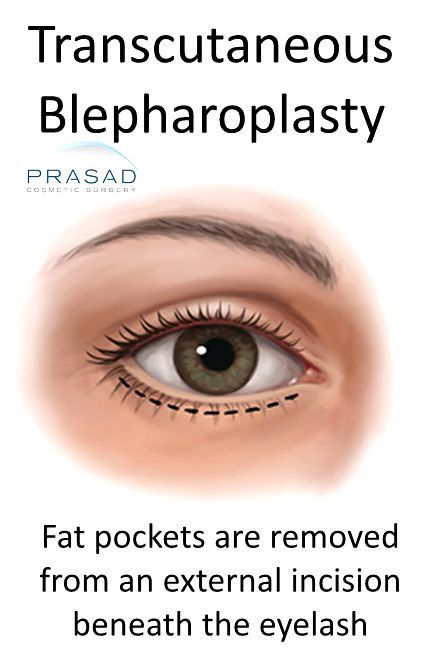
Transcutaneous Blepharoplasty Incision Lines
The transcutaneous method does involve a longer healing time because the body does need to heal the incision on the skin, so temporary swelling does last longer with this method. Collagen is disorganized during the initial healing period, which normally lasts about a month until collagen fibers start to flatten, and swelling progressively resolves in the following months. Chances of temporary bruising are also increased because of more trauma to the eyelid skin with this method.
Lower Lid Blepharoplasty Risks
Transcutaneous blepharoplasty does have a much higher risk of surgical complications than the transconjunctival method, which not only extends healing, but also often requires further revision surgery. The external incision can compromise lower eyelid support structures, which include the skin, the orbicularis oculi muscle, and the lateral canthal tendon, which can lead to drooping of the lower eyelid, or rounding of the eyes.
Compounding the issue is many surgeons mistakenly removing lower eyelid skin attempting to improve under eye wrinkles. Drooping of the lower eyelids, and a skin shortage can lead to problems like lower eyelid retraction, where the eyelid skin is pulled down; ectropion, where the edges of the lower eyelid revert outward, leading to irritation; or entropion where the lower eyelid curls inward, also leading to irritation.
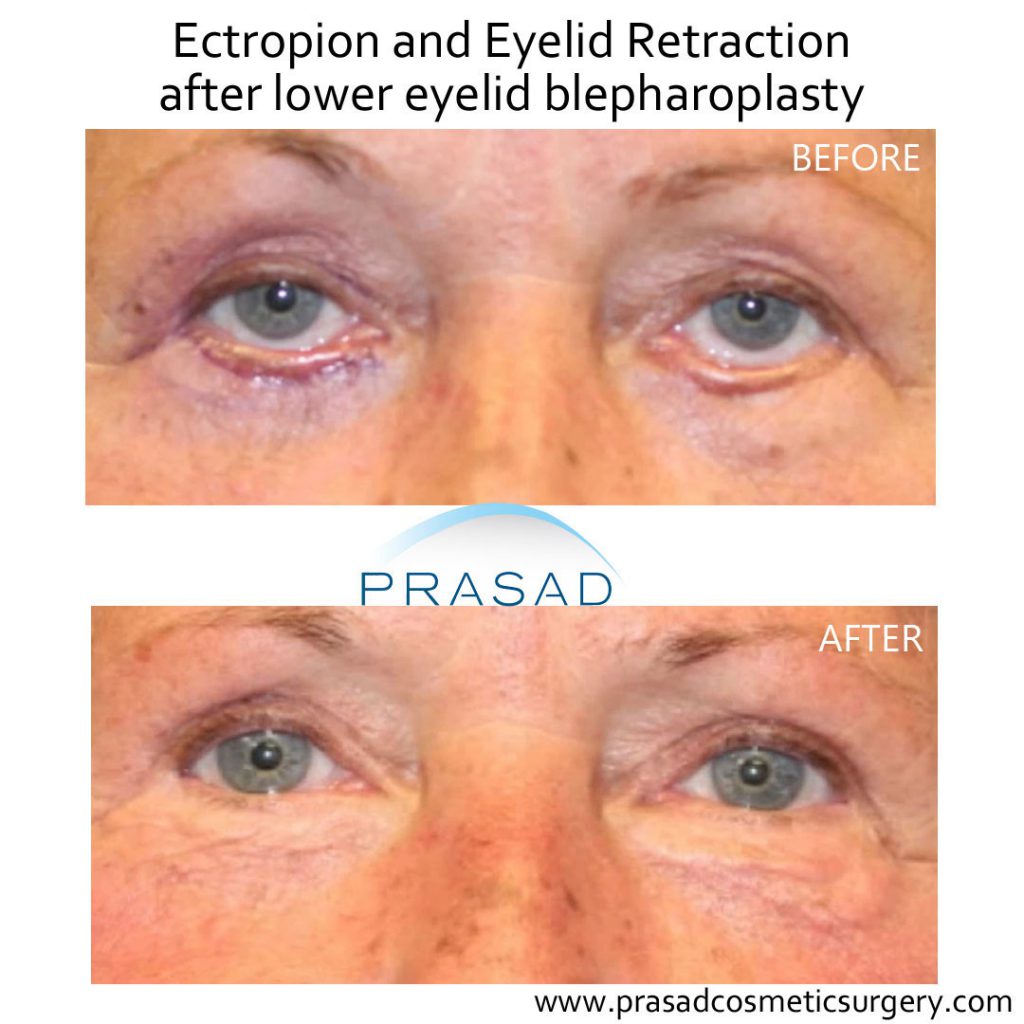
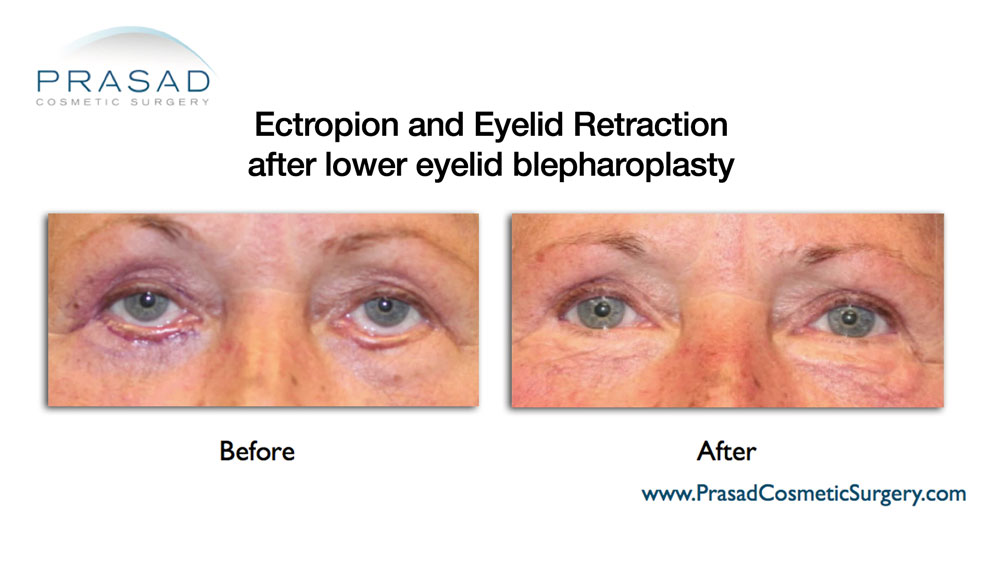
Lower eyelid retraction and skin shortages can also lead to eyes not being able to fully close, which disrupts sleep. Tear film distribution is also affected so the eyes don’t properly lubricate, and clear dirt, which also leads to irritation. As a Fellowship-trained oculoplastic surgeon, and Board-certified cosmetic surgeon, I often perform revision surgery to correct these problems from transcutaneous blepharoplasties originally performed by other doctors.
To get it right the first time for faster recovery, and to avoid costly revision surgery, I only perform the transconjunctival method for eye bag removal so lower eyelid support structures are uncompromised, and the natural shape and character of the eyes are preserved. If there are under-eye wrinkles, I treat the cause which is diminished skin quality, not excess skin quantity. This can be done with a laser or radiofrequency treatment to tighten and resurface lower eyelid skin, as well as stimulate collagen. Platelet-rich plasma, or PRP, can further improve lower eyelid skin quality and thickness. These non-surgical procedures to improve lower eyelid skin and wrinkles can be done at the same time as surgery.
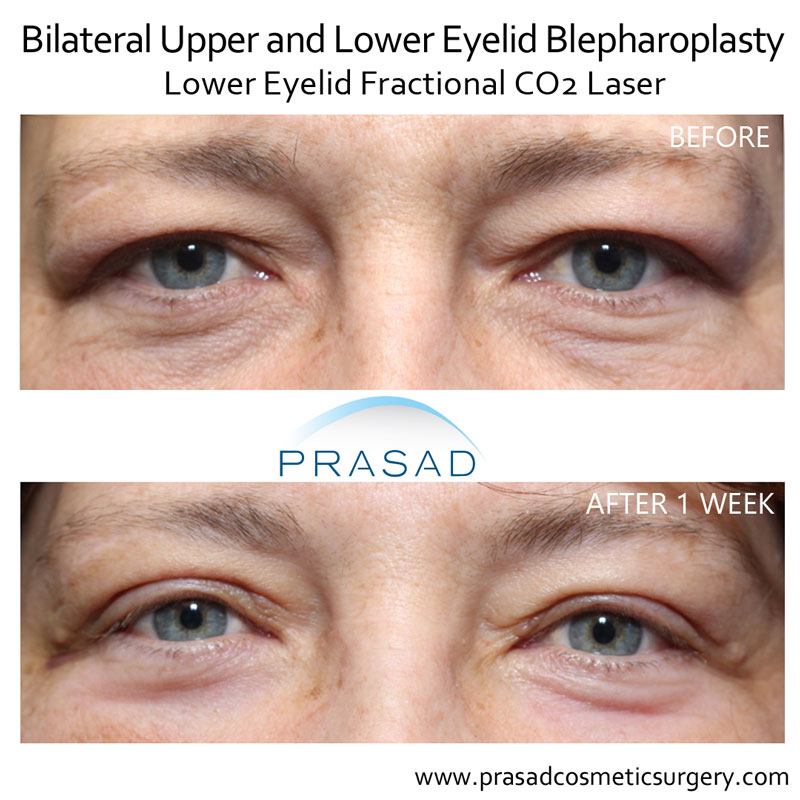
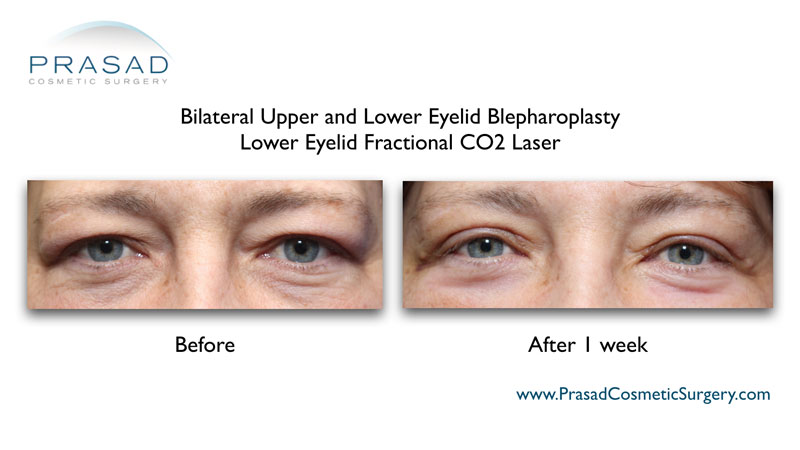
How Long Does a Lower Blepharoplasty Last?
Blepharoplasty results last long-term as once the prolapsed orbital fat is removed, it does not return. However, it is possible for new prolapsed orbital fat to occur later in life. While lower blepharoplasty is not a permanent procedure, some patients I operated on over two decades ago still report about their lower eyelids still looking great.
Is Lower Blepharoplasty Worth it?
When lower blepharoplasty is done without an external incision, and without compromising lower eyelid shape and support, it is worth it. It can be one of the fastest surgeries to recover from, with results looking entirely natural like you never had eye bags. The results are like a facelift where the whole face looks brighter and rejuvenated. When performed routinely in our practice, patients often say that if they knew the surgery and recovery were this easy, they wouldn’t have hesitated to do it for so long. I hope you found this information helpful.
Lower Blepharoplasty Manhattan NYC and Garden City, Long Island New York
Dr. Amiya Prasad is a Board-Certified Cosmetic Surgeon, and a Fellow in Oculofacial Plastic and Reconstructive Surgery. He has been in practice in Manhattan and Long Island for over 25 years, and was trained in eye surgery before specializing in cosmetic and reconstructive eyelid surgery. Patients from all over the world come to see him for cosmetic eyelid surgery.
